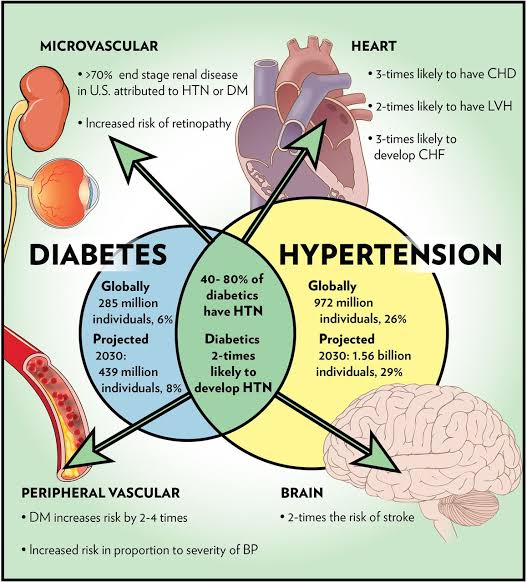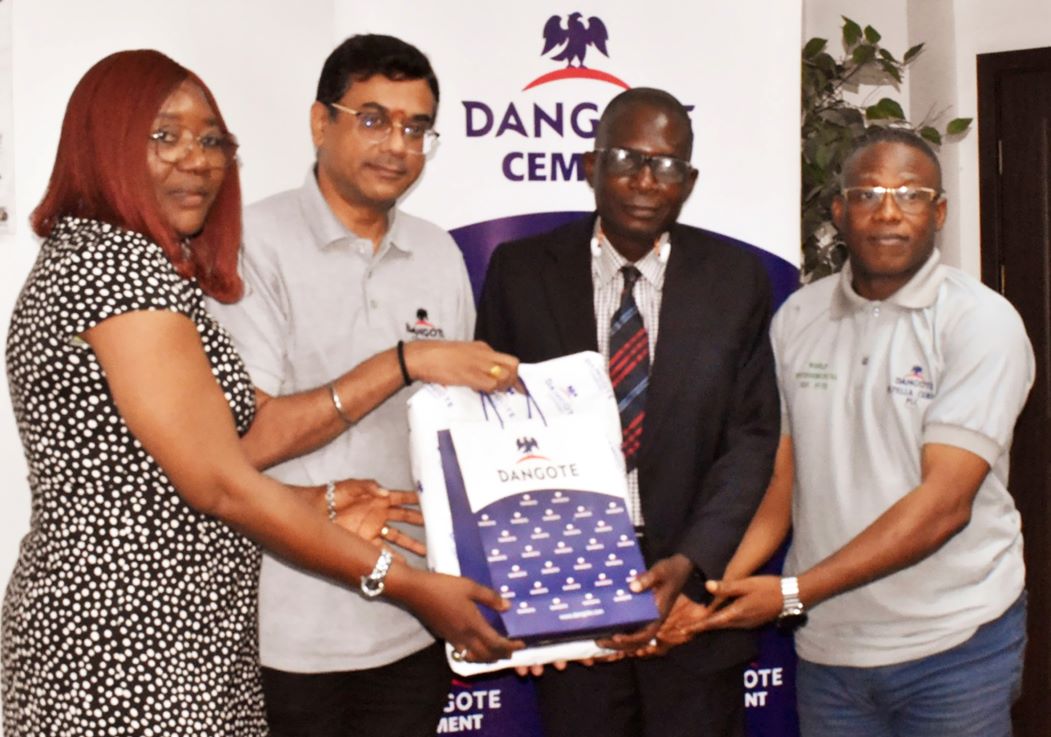In today’s fast-paced world, chronic diseases like diabetes and hypertension have emerged as silent epidemics, affecting millions of people globally and placing an immense burden on healthcare systems, economies, and individual lives. These conditions, often referred to as “lifestyle diseases,” are increasingly prevalent due to modern dietary habits, sedentary lifestyles, and rising stress levels. Yet, both diabetes and hypertension are largely preventable, and early detection can significantly reduce their impact. This article aims to raise awareness about the prevention and early detection of diabetes and hypertension, offering practical guidance, scientific insights, and a call to action for individuals, communities, and policymakers to prioritize health and well-being.
Understanding Diabetes and Hypertension
What is Diabetes?
Diabetes is a chronic condition characterized by elevated blood sugar levels due to the body’s inability to produce or effectively use insulin, a hormone that regulates glucose in the blood. There are three main types of diabetes:
Type 1 Diabetes: An autoimmune condition where the body attacks insulin-producing cells in the pancreas. It typically develops in childhood or adolescence and requires lifelong insulin therapy.
Type 2 Diabetes: The most common form, accounting for 90–95% of cases, where the body becomes resistant to insulin or doesn’t produce enough. It is strongly linked to lifestyle factors such as obesity, poor diet, and physical inactivity.
Gestational Diabetes: Occurs during pregnancy and usually resolves after childbirth but increases the risk of developing Type 2 diabetes later in life.
According to the International Diabetes Federation (IDF), approximately 537 million adults worldwide were living with diabetes in 2021, a number projected to rise to 783 million by 2045. In Africa, Nigeria has one of the highest burdens, with an estimated 24 million cases, many undiagnosed.
What is Hypertension?
Hypertension, or high blood pressure, occurs when the force of blood against artery walls is consistently too high, increasing the risk of heart disease, stroke, kidney damage, and other complications. Blood pressure is measured in millimeters of mercury (mmHg) with two numbers: systolic (pressure during heartbeats) and diastolic (pressure between heartbeats). A reading of 130/80 mmHg or higher is considered hypertension, according to updated guidelines from the American Heart Association.
The World Health Organization (WHO) estimates that 1.28 billion adults globally have hypertension, with two-thirds living in low- and middle-income countries. In Nigeria, the prevalence is alarming, with studies suggesting that 30–40% of adults are affected, often unaware of their condition until complications arise.
Both diabetes and hypertension are interconnected, sharing risk factors like obesity, poor diet, and inactivity. They also amplify each other’s impact: hypertension increases the risk of diabetic complications, while diabetes can damage blood vessels, exacerbating high blood pressure. Together, they contribute to a significant portion of global mortality, with cardiovascular diseases accounting for 17.9 million deaths annually, according to WHO.
The Silent Threat: Why Awareness Matters
Diabetes and hypertension are often called “silent killers” because they can develop without noticeable symptoms, progressing undetected until severe complications arise. For diabetes, symptoms like increased thirst, frequent urination, fatigue, or blurred vision may go unnoticed or be dismissed. Hypertension, meanwhile, rarely presents symptoms until it causes a heart attack, stroke, or kidney failure.
The lack of early symptoms underscores the importance of awareness and proactive screening. Early detection allows for timely interventions that can prevent or delay complications, improve quality of life, and reduce healthcare costs. Prevention, meanwhile, empowers individuals to take control of their health through lifestyle changes, reducing the incidence of these conditions.
Risk Factors: Who is at Risk?
Understanding the risk factors for diabetes and hypertension is critical for prevention and early detection. These factors can be divided into non-modifiable and modifiable categories.
Non-Modifiable Risk Factors
Genetics/Family History: A family history of diabetes or hypertension increases risk. For example, individuals with a parent or sibling with Type 2 diabetes are up to three times more likely to develop it. Similarly, genetic predispositions to hypertension are common, particularly in African populations.
Age: The risk of both conditions rises with age, particularly after 40 for hypertension and 45 for Type 2 diabetes.
Ethnicity: Certain ethnic groups, including African, South Asian, and Hispanic populations, have a higher predisposition to both diseases.
Gender: Men are slightly more likely to develop hypertension, while women face risks during pregnancy (gestational diabetes) or menopause.
Modifiable Risk Factors
Obesity: Excess body weight, particularly around the abdomen, is a major driver of insulin resistance and hypertension. A body mass index (BMI) of 30 or higher significantly increases risk.
Poor Diet: Diets high in processed foods, sugar, salt, and unhealthy fats contribute to both conditions. Excessive sodium intake, for instance, raises blood pressure, while sugary drinks are linked to Type 2 diabetes.
Physical Inactivity: A sedentary lifestyle impairs glucose metabolism and increases blood pressure. WHO recommends at least 150 minutes of moderate aerobic activity weekly to mitigate these risks.
Stress: Chronic stress triggers hormonal changes that elevate blood sugar and blood pressure. Work-related stress, financial pressures, and social challenges are common contributors.
Smoking and Alcohol: Smoking damages blood vessels, worsening hypertension, while excessive alcohol consumption disrupts glucose regulation and raises blood pressure.
Sleep Disorders: Conditions like sleep apnea are linked to both hypertension and insulin resistance.
In Nigeria, cultural and socioeconomic factors exacerbate these risks. The shift toward Westernized diets, with increased consumption of fast foods and sugary beverages, has fueled obesity rates. Urbanization has reduced physical activity, while economic challenges and inadequate healthcare access hinder early detection and management.
Prevention: Taking Charge of Your Health
The good news is that both diabetes and hypertension are largely preventable through lifestyle changes. By addressing modifiable risk factors, individuals can significantly reduce their chances of developing these conditions. Below are evidence-based strategies for prevention.
1. Adopt a Balanced Diet
A healthy diet is the cornerstone of prevention. Focus on:
Whole Foods: Prioritize fruits, vegetables, whole grains (e.g., brown rice, oats), lean proteins (e.g., fish, poultry, beans), and healthy fats (e.g., avocados, nuts, olive oil).
Low Sodium Intake: Limit salt to less than 2,300 mg daily (about one teaspoon). Avoid processed foods like canned soups, snacks, and fast foods, which are high in sodium.
Reduce Sugar: Cut back on sugary drinks, sweets, and refined carbohydrates. Opt for natural sweeteners like fruits or small amounts of honey.
Portion Control: Overeating, even healthy foods, can lead to weight gain. Use smaller plates and practice mindful eating to avoid overconsumption.
In Nigeria, incorporating local foods like yam, plantain, beans, and leafy greens (e.g., ugu, spinach) into meals can support a balanced diet. Traditional spices like ginger and garlic have anti-inflammatory properties that may help manage blood pressure.
2. Stay Physically Active
Regular exercise improves insulin sensitivity, lowers blood pressure, and helps maintain a healthy weight. Aim for:
Aerobic Exercise: Activities like brisk walking, jogging, cycling, or dancing for at least 150 minutes per week.
Strength Training: Incorporate muscle-strengthening exercises (e.g., bodyweight exercises, lifting weights) twice weekly.
Daily Movement: Take stairs instead of elevators, walk to nearby destinations, or engage in active hobbies like gardening.
For those in urban areas like Lagos or Abuja, community fitness groups or workplace exercise programs can make physical activity more accessible. Even small changes, like a 30-minute daily walk, can make a significant difference.
3. Maintain a Healthy Weight
Achieving and maintaining a healthy weight is critical. Even a 5–10% reduction in body weight can lower blood pressure and improve glucose control. Strategies include:
Calorie Awareness: Track food intake to ensure a balance between calories consumed and burned.
Regular Monitoring: Use BMI or waist circumference to assess progress. A waist circumference above 40 inches (men) or 35 inches (women) indicates higher risk.
Professional Support: Consult dietitians or nutritionists for personalized plans, especially for those with cultural dietary preferences.
4. Manage Stress
Chronic stress contributes to both conditions by raising cortisol and adrenaline levels. Effective stress management techniques include:
Mindfulness and Meditation: Practices like deep breathing, yoga, or mindfulness meditation can lower stress hormones.
Social Connections: Spend time with family and friends to build emotional resilience.
Professional Help: Therapy or counseling can address chronic stress or mental health challenges.
In Nigeria, community-based activities like church groups or cultural events can provide social support and reduce stress.
5. Limit Alcohol and Quit Smoking
Alcohol: Limit intake to one drink per day for women and two for men. Avoid binge drinking, which spikes blood pressure.
Smoking: Quit smoking to protect blood vessels and improve overall health. Seek support through counseling or nicotine replacement therapies.
6. Prioritize Sleep
Aim for 7–9 hours of quality sleep nightly. Address sleep disorders like insomnia or sleep apnea through medical consultation. Good sleep hygiene includes maintaining a regular sleep schedule, avoiding screens before bed, and creating a restful environment.
Early Detection: Catching the Silent Killers Early
Early detection is crucial for managing diabetes and hypertension before they cause irreversible damage. Regular screening can identify these conditions in their early stages, when interventions are most effective.
Screening for Diabetes
Who Should Get Screened? Adults over 45, those with a family history, obesity, or other risk factors should be screened regularly. Pregnant women should be tested for gestational diabetes between 24–28 weeks.
Tests:
Fasting Blood Glucose: Measures blood sugar after an 8-hour fast. A level of 126 mg/dL or higher indicates diabetes.
HbA1c: Reflects average blood sugar over 2–3 months. A value of 6.5% or higher confirms diabetes.
Oral Glucose Tolerance Test: Measures blood sugar response after consuming a sugary drink. Used for gestational diabetes or borderline cases.
Frequency: Every 3 years for those over 45 or with risk factors; more frequently if results are borderline.
Screening for Hypertension
Who Should Get Screened? All adults over 18 should have their blood pressure checked annually. Those with risk factors or a history of high readings may need more frequent monitoring.
Method: Blood pressure is measured using a cuff and monitor. Home monitors are widely available and can help track trends.
Frequency: At least once a year, or more often for those with elevated readings (120–129/<80 mmHg) or hypertension.
In Nigeria, access to screening can be challenging, particularly in rural areas. Community health programs, mobile clinics, and partnerships with NGOs can bridge this gap. Pharmacies and primary health centers often offer affordable blood pressure checks, while glucometers for home glucose testing are increasingly accessible.
Complications: The Stakes of Inaction
Failing to prevent or detect diabetes and hypertension early can lead to severe complications, including:
Cardiovascular Disease: Both conditions increase the risk of heart attack, stroke, and heart failure. Hypertension damages arteries, while diabetes accelerates atherosclerosis.
Kidney Damage: Diabetic nephropathy and hypertensive kidney disease can lead to kidney failure, requiring dialysis.
Eye Damage: Diabetic retinopathy can cause blindness, while hypertension can damage retinal blood vessels.
Neuropathy: Diabetes can cause nerve damage, leading to numbness, pain, or loss of sensation, particularly in the extremities.
Amputations: Poorly managed diabetes can lead to infections and amputations, especially in the feet.
These complications not only reduce quality of life but also impose significant financial burdens. In Nigeria, where out-of-pocket healthcare costs are high, managing advanced complications can devastate families financially.
Community and Policy-Level Interventions
While individual actions are critical, addressing diabetes and hypertension requires a collective effort. Communities, healthcare providers, and policymakers must work together to create an environment that supports prevention and early detection.
Community Initiatives
Awareness Campaigns: Local organizations, churches, and schools can host workshops, health fairs, and screenings to educate communities about risk factors and prevention strategies.
Support Groups: Peer support groups for those with diabetes or hypertension can provide encouragement, share tips, and reduce stigma.
Healthy Food Access: Community gardens or markets can promote access to fresh, affordable produce, countering the reliance on processed foods.
Healthcare System Improvements
Training: Train healthcare workers, especially in rural areas, to conduct screenings and provide counseling on lifestyle changes.
Affordable Care: Subsidize screening tools (e.g., glucometers, blood pressure monitors) and medications to ensure accessibility.
Integration: Incorporate diabetes and hypertension screening into routine primary care visits to catch cases early.
Policy Recommendations
Regulation of Food Industry: Implement taxes on sugary drinks and enforce clear nutritional labeling to guide consumer choices.
Public Health Campaigns: Fund nationwide campaigns, like Nigeria’s “Know Your Numbers” initiative, to promote regular screening.
Urban Planning: Design cities with walkable spaces, bike lanes, and recreational facilities to encourage physical activity.
Workplace Wellness: Encourage employers to offer wellness programs, including health screenings and fitness incentives.
In Nigeria, the Federal Ministry of Health and organizations like the Diabetes Association of Nigeria are already taking steps, but scaling these efforts requires sustained funding and political will.
A Call to Action: Your Health, Your Responsibility
The fight against diabetes and hypertension begins with individual awareness and action. Here’s how you can take charge:
Get Screened: Schedule a blood pressure check and blood glucose test today, especially if you have risk factors.
Know Your Numbers: Understand your blood pressure and glucose readings, and work with a healthcare provider to set goals.
Make Small Changes: Start with one change, like reducing soda intake or walking 10 minutes daily, and build from there.
Educate Others: Share what you learn with family and friends to create a ripple effect of awareness.
Advocate: Support policies and programs that promote health equity and access to care.
For communities, the call is to foster environments where healthy choices are easy and accessible. For policymakers, the challenge is to prioritize prevention and early detection as cost-effective strategies to reduce the burden of chronic diseases.
Conclusion: A Healthier Future is Possible
Diabetes and hypertension are formidable challenges, but they are not invincible. Through informed lifestyle choices, regular screening, and collective action, we can prevent these conditions and catch them early when they do occur. In Nigeria and beyond, the stakes are high: millions of lives, billions of dollars, and the well-being of future generations depend on our response.
As we move forward, let us commit to a vision of health where no one suffers silently from preventable diseases. By raising awareness, empowering individuals, and strengthening systems, we can turn the tide against diabetes and hypertension, building a healthier, more resilient world for all.








